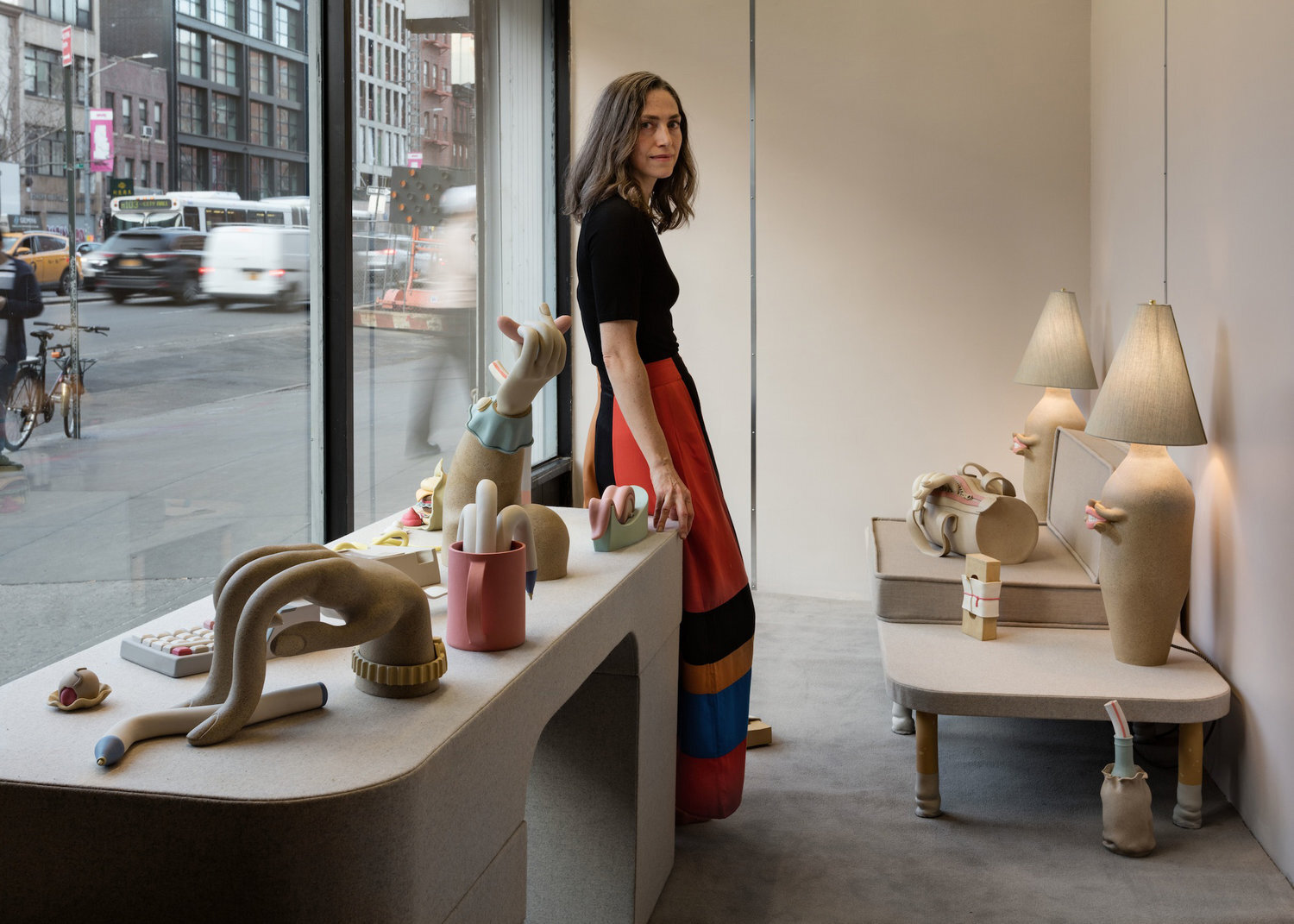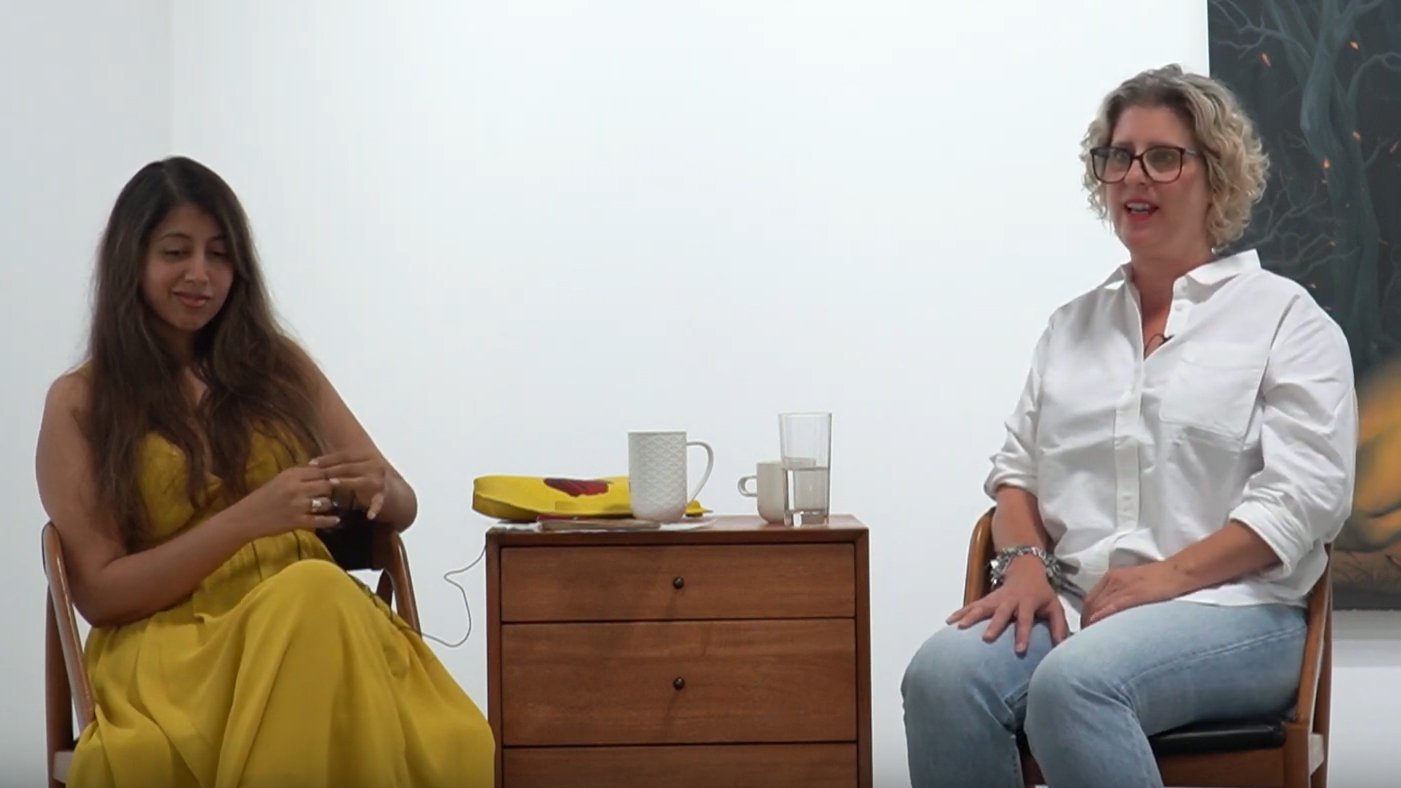In Conversation: Genesis Belanger
INTERVIEW
BY ANNA KOVLER
Published Jul 25, 2019
Genesis Belanger is quickly gaining recognition for her ceramic sculptures that playfully critique visual tropes of gender, desire, work and addiction. Accompanied by furniture and arranged into surreal installations that recall mid-century American interiors, her clay works are full of innuendo, with frequent nods to sexual acts and various forms of humorous dysfunction. Her discussion of advertising and its predatory mechanics was shaped in part by a job she had between degrees, making props commissioned by set designers for companies like Victoria’s Secret, Tiffany & Co. and Chanel. In her work desire slides into mild repulsion as we become self aware of our dogged habits and silly distractions. This sculptural world however, is not overly judgmental or moralizing, instead framing the human condition as tender, confused, and full of contradictions. I spoke with Genesis about her process and what she’s working on next.
Anna Kovler: I find your work very funny, how do you usually come up with these visual jokes?
Genesis Belanger: Usually my work starts from something that is frustrating me, like an injustice or something I read in the news, or history more generally. I think humor is a great alleviator of stress and frustration, it’s sort of a release valve and it feels natural to make jokes about things that make me angry.
AK: There is a recurring motif in your work of phallic objects that should be rigid but are limp (like the cigarettes, pens, straws and candles). I find those especially funny.
GB: They are absolutely meant to be funny. The whole point of those is that art historically there is the idea of masculine monoliths and what I’m making is the opposite.
AK: What kind of clay are you using to get that matt surface, and how do you make your larger pieces?
GB: I choose different clay bodies for their specific qualities, and I don’t use glaze. The usual shine of ceramics is because glaze is essentially glass, but the clay itself has this sort of matt subtle sheen naturally. I get the smoothness from using a basic clay tool called a plastic rib on the surface. For my larger pieces, like the giant fingers, I am making them in parts that fit inside each other kind of like Lego; they click together and come apart almost like bricks.
AK: What themes are you thinking about right now?
GB: I’m on a slightly different trajectory with my new work. I have been paying a lot of attention to advertising, and I find ads frustrating in the way they take advantage of the fact that as humans we don’t always understand our motivations. We are often not quite sure why we are doing something, and we can be manipulated because of that.
I think this unknown factor impacts us in more intimate ways, and I’ve been thinking specifically about grief. There is so little space for grieving in our culture. I think people who are grieving might not know why they are doing what they are doing, and there is little support for it. And grief isn’t limited to obvious things like death; it can even be something seemingly positive like graduating and leaving school, or moving to a new place. I think it is absurd that there isn’t more space for grief. There is all this pressure for emotions to be positive and since we have not created the social networks for feeling other ways, these feelings might ooze out in the form of bad habits or destructive power grabs.
AK: Do you know yet what physical shapes or symbols these ideas might take?
GB: I usually start my projects by thinking about the nature of the room or space I’m going to allude to. This time I’ve been looking at this practice involving grand old houses in England and America where they would be shut down for the season and all the furniture covered in these strange protective white covers. It’s essentially a symbol of something being temporarily closed, but it also looks like ghosts. There is an emotion of grief there, or a temporary break from functioning at 100%. So I am thinking of making a room full of furniture that’s been “closed for the season”, with ghostly gowns, and this will form the pedestals for the objects I make; they will be in this liminal space that is paused.





